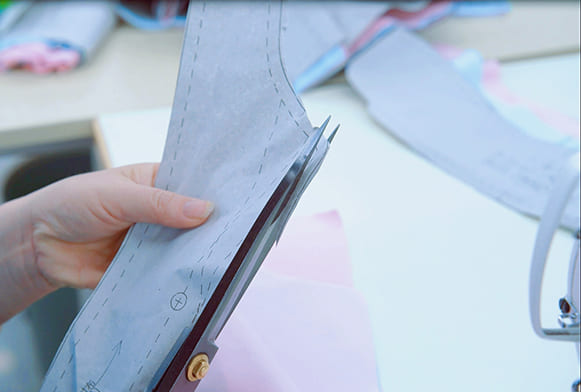Fabric Elements And Factors Influencing The Quotation Of Pajamas

1. Width
Width refers to the width of the fabric, which is usually expressed in inches or centimeters. Common widths include 36 inches, 44 inches, 56-60 inches ,etc., which are respectively called narrow width, medium width and wide width. Fabrics with a width over 60 inches are called extra wide width, often referred to as wide width fabric. Currently, the width of extra wide fabric in Chinese home wear factories can reach 360 centimeters.
2. Gram Weight
The "gram weight" of textiles refers to the weight in grams of a standard measurement unit. For example, if the gram weight of a knitted fabric is 200 grams per square meter, it is expressed as 200g/m², etc. It is a unit of weight. Since knitted fabrics are woven by looping, it is difficult to describe their texture by yarn count, tightness, etc. Only gram weight is the easiest and most reasonable standard. Therefore, the gram weight standard is widely used for measuring knitted fabrics.
The choice of gram weight for customing pajamas is related to local climate and personal preference. For example, in the United States, the gram weight is generally above 190g, while in Saudi Arabia and the United Arab Emirates, the gram weight of pajama fabrics is usually below 190g, and they mainly use cooling Tencel as the main fabric.
3. Yarn Count
Yarn count refers to the fineness of the yarn, usually expressed by the letter "S". For example, if 1 pound of yarn is 21x840 yards long, its fineness is 21S. According to fineness, it is generally divided into 21S, 30S, 40S, 60S, 80S.
4. Warp and Weft Density
Warp and weft density, also known as fabric density, is the sum of warp density and weft density. The warp direction is the length direction of the fabric, which is perpendicular to the width. The weft direction is the width direction of the fabric, which is parallel to the width. The total number of warp yarns in 1 square inch of fabric is called warp density, and the total number of weft yarns is called weft density. Warp and weft density refers to the number of warp and weft yarns per square inch. For example, the commonly seen "40×40/128×68" indicates that the warp and weft yarns are 40S respectively, and the warp and weft density is 128×68.
Factors affecting the processing fee for customing pajamas:
1. Whether the fabric is knitted or woven.
2. The number of styles, colors, and sizes.
3. Whether there are special processes or special stitching.
4. Whether the packaging method is special.





Leave a comment